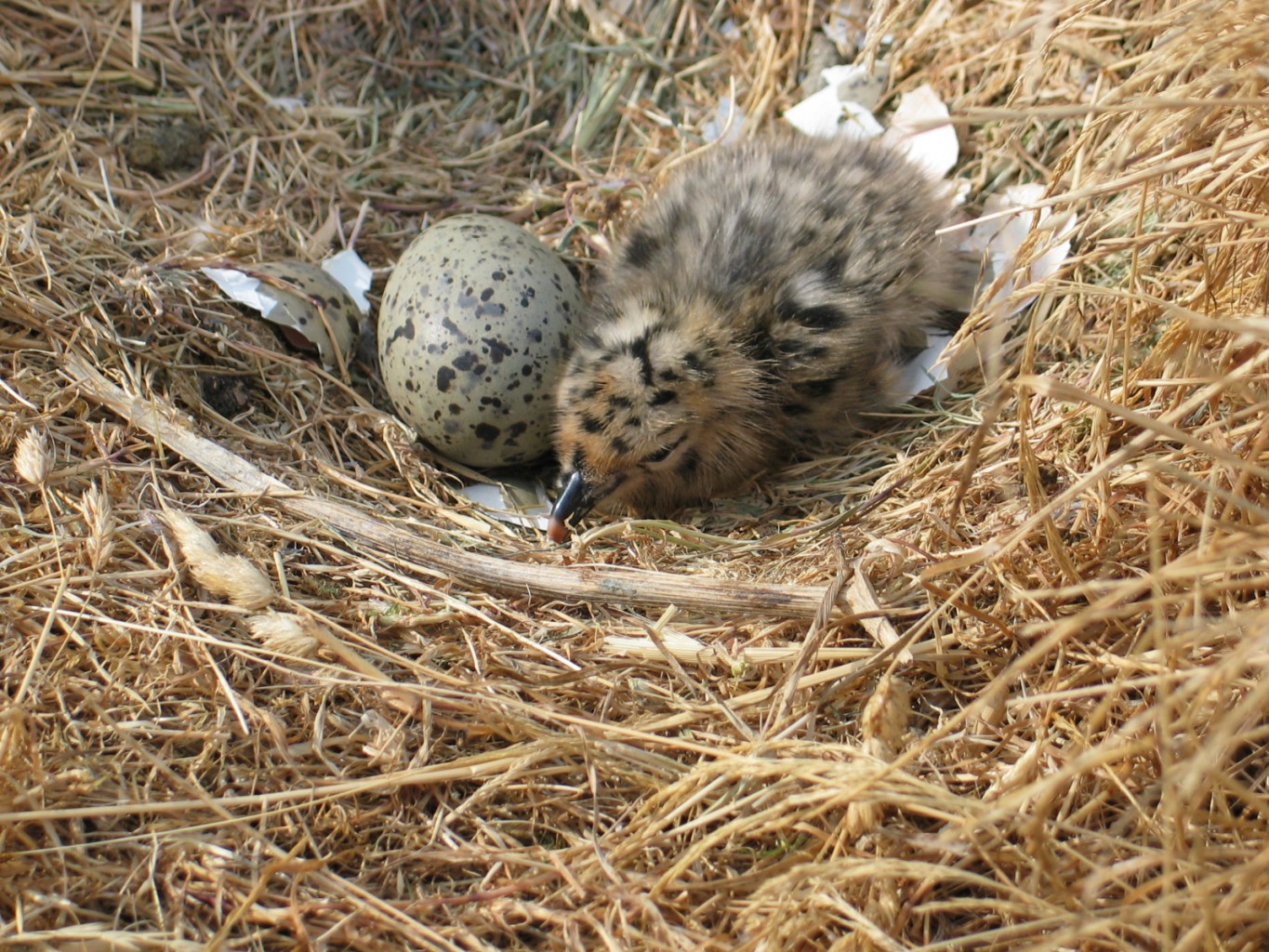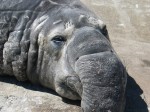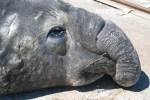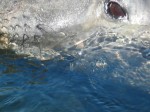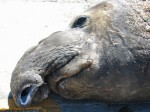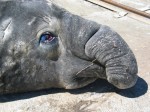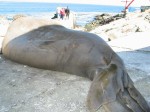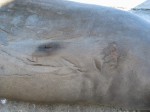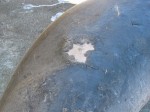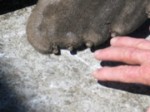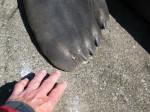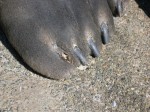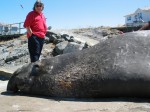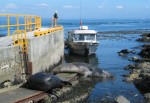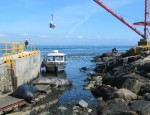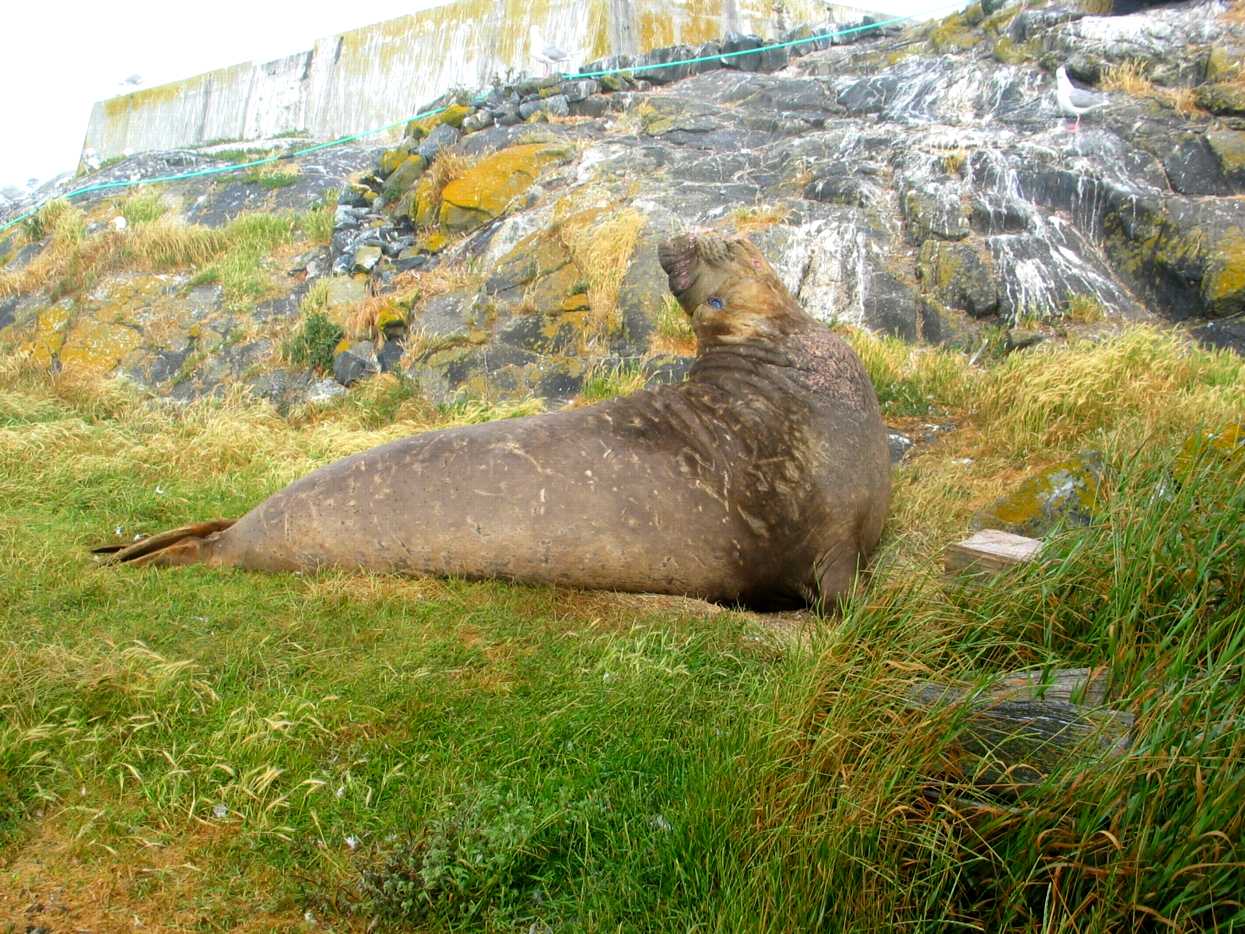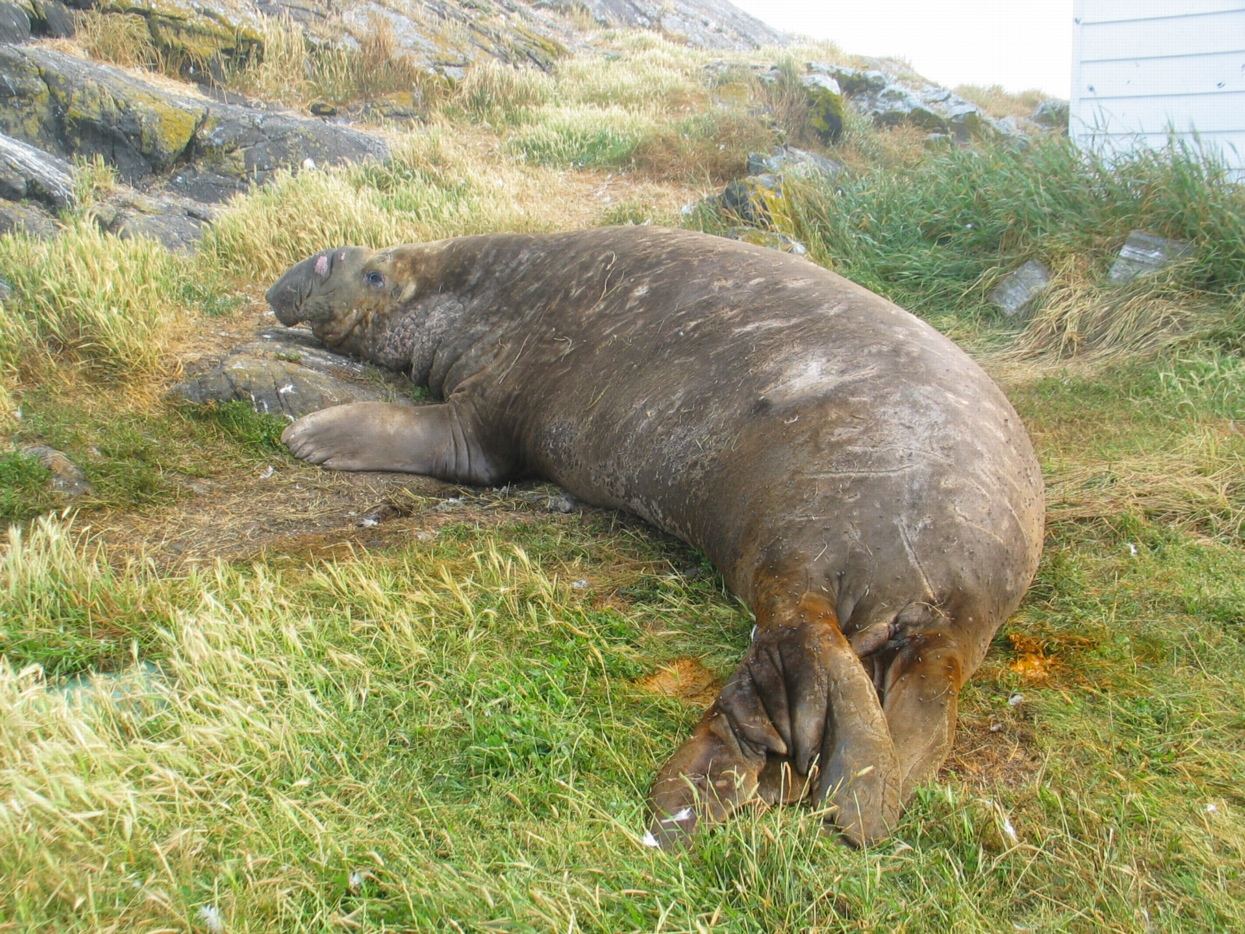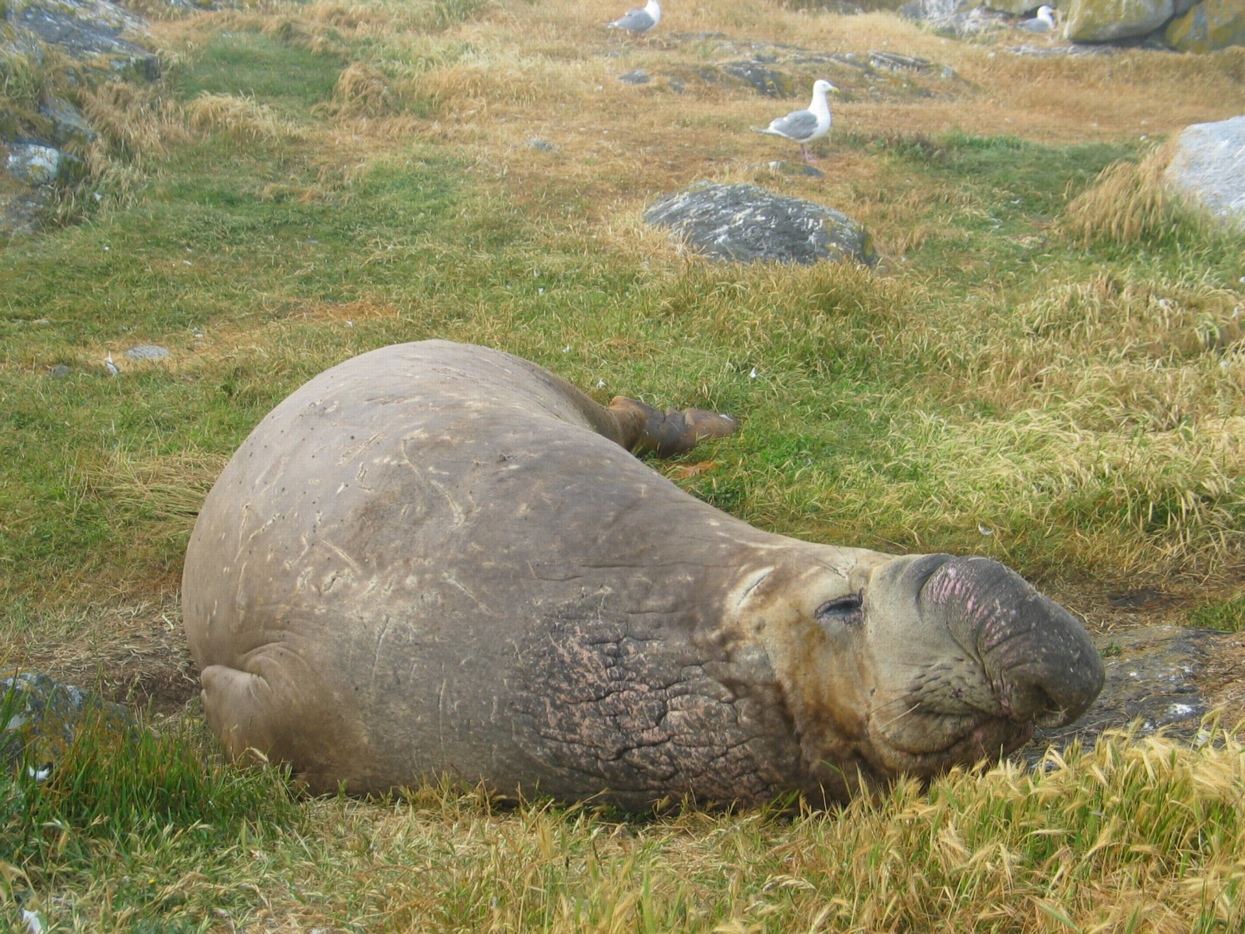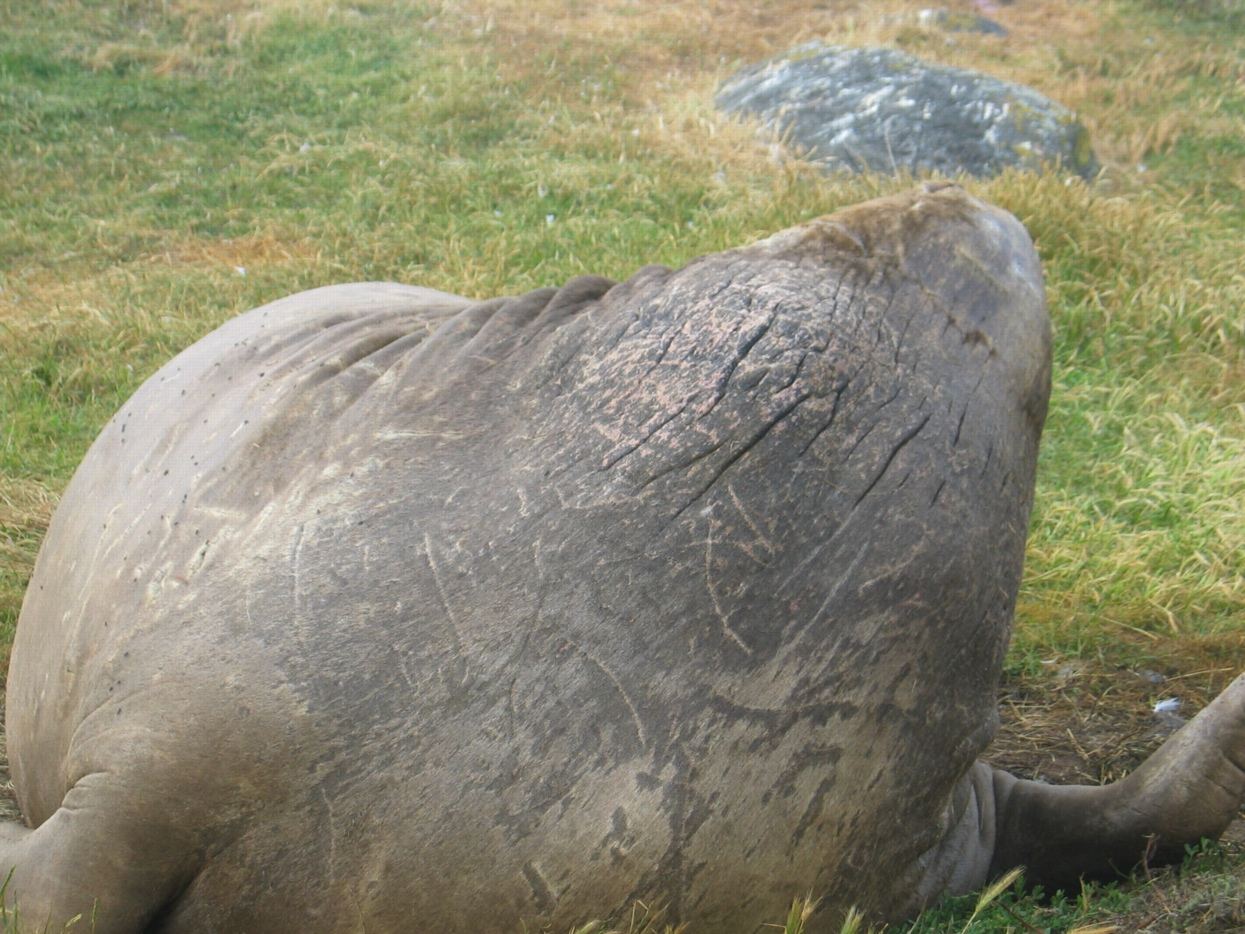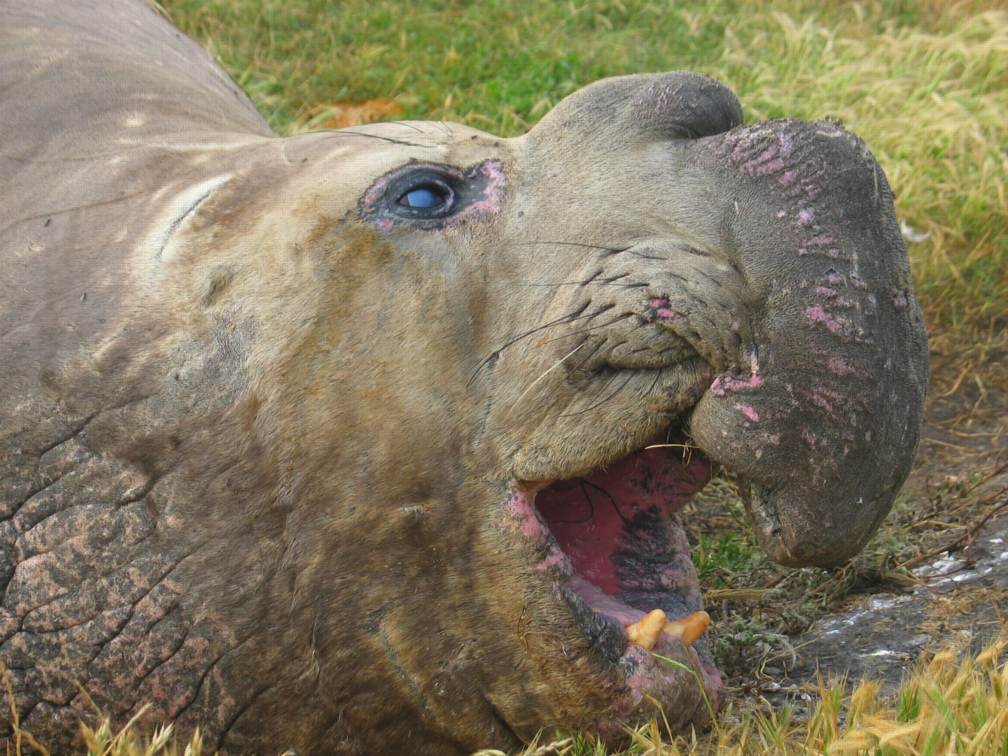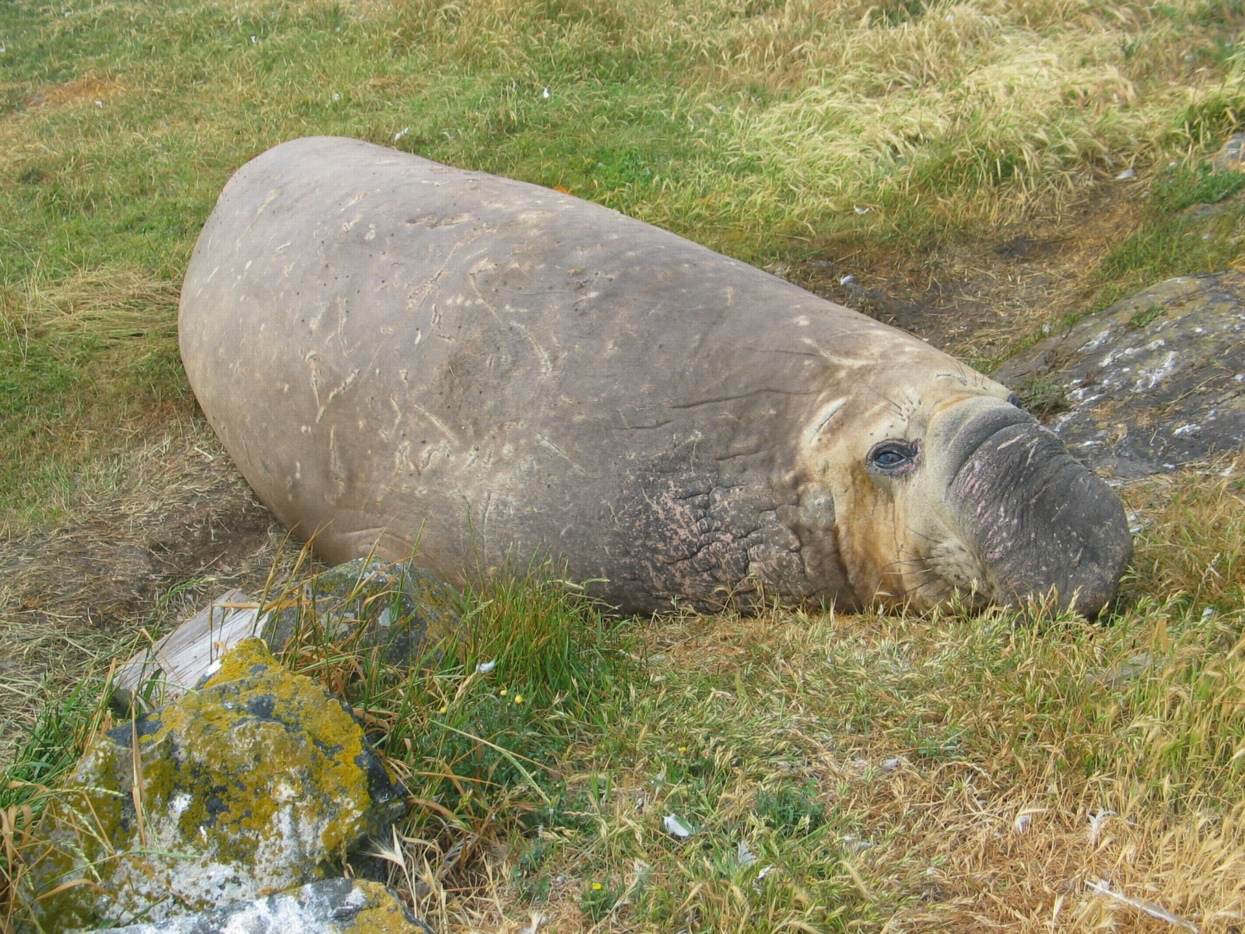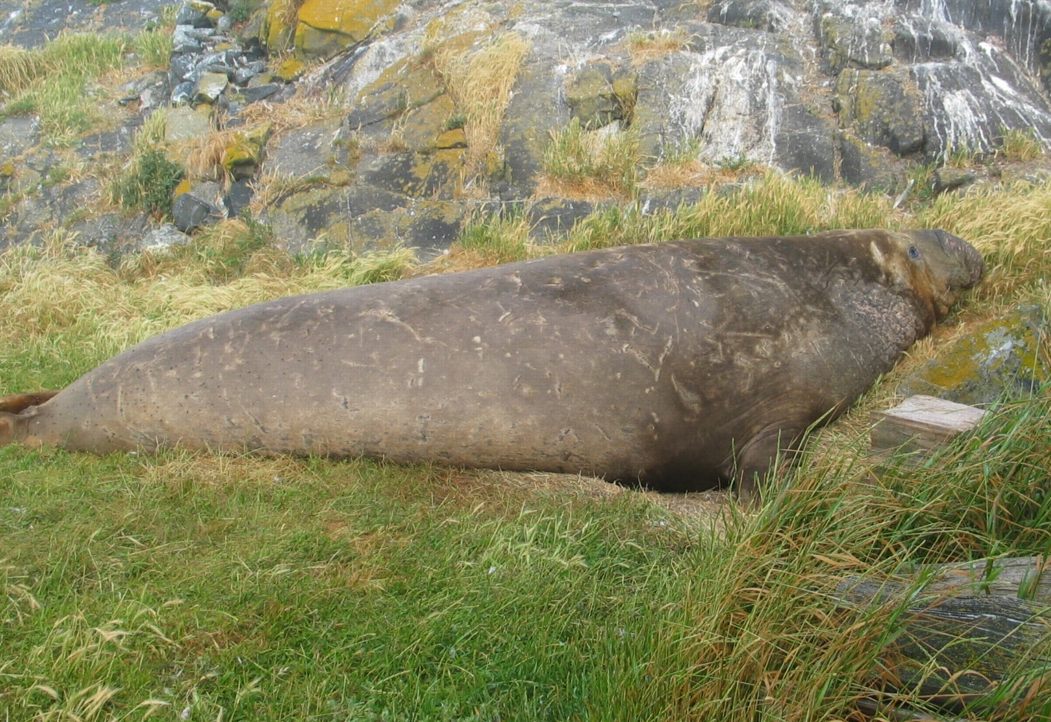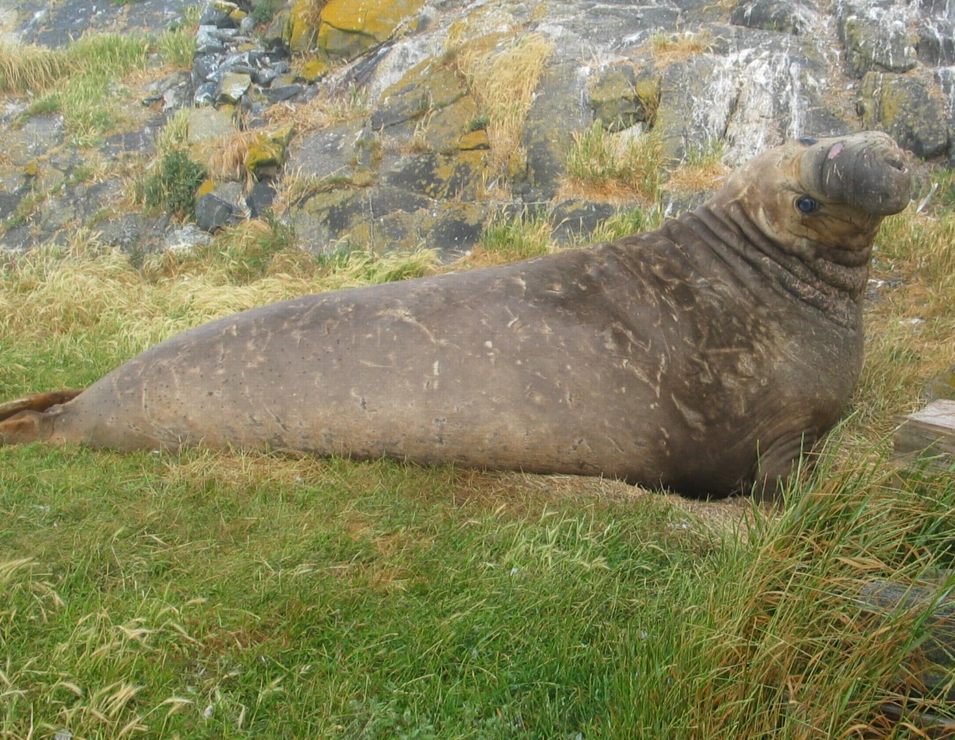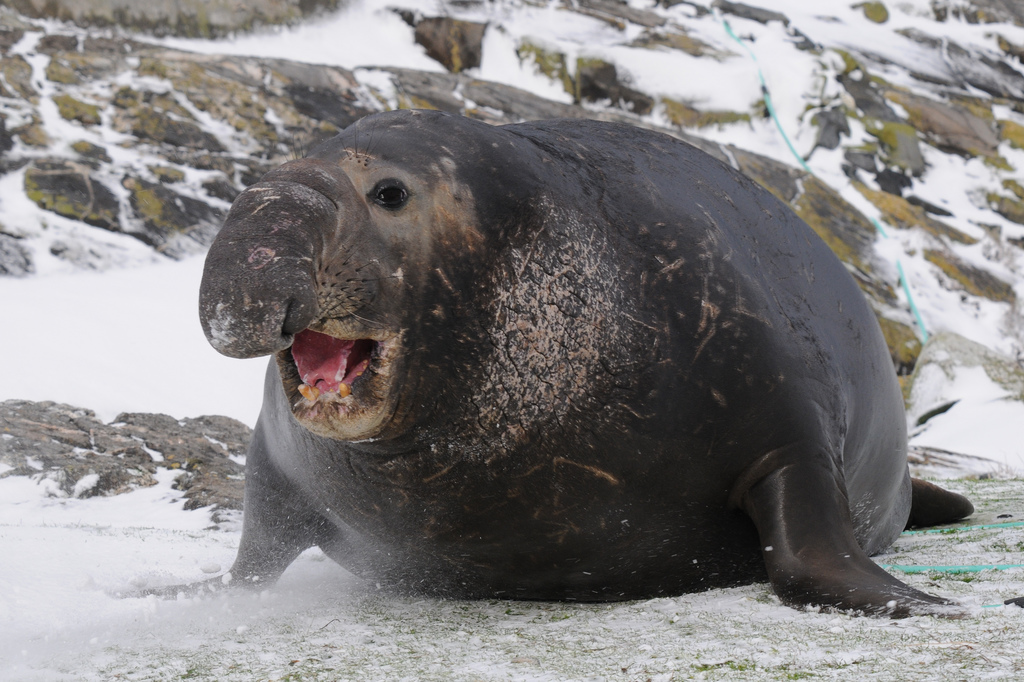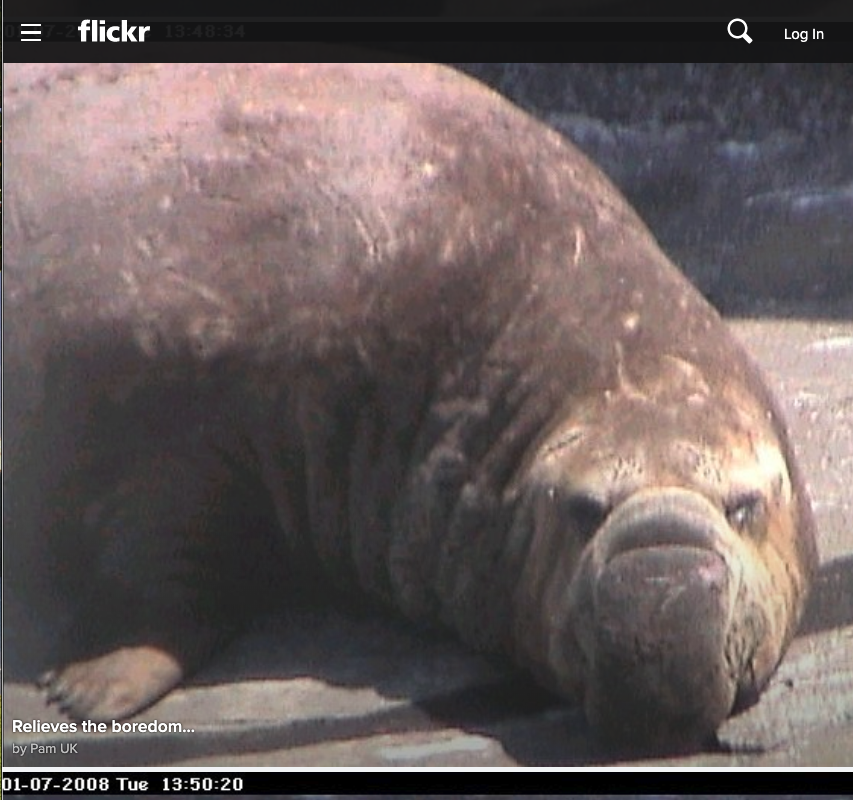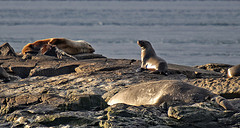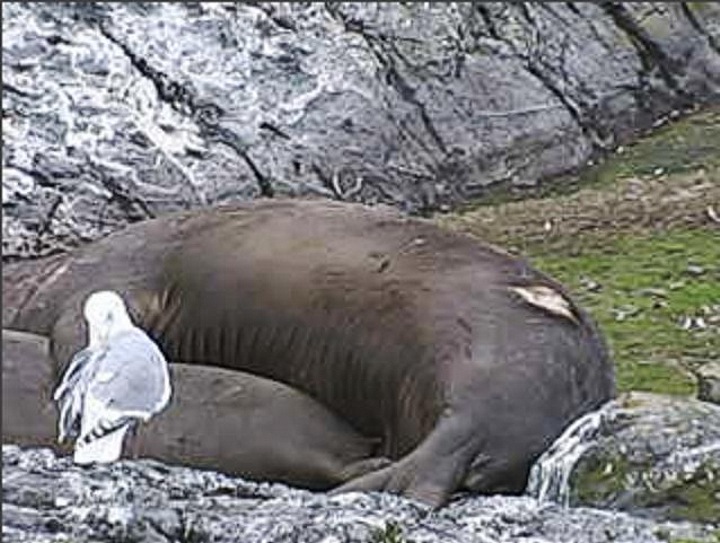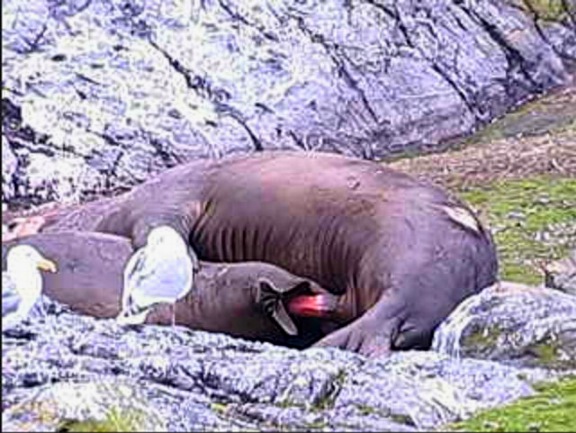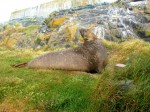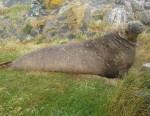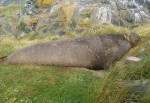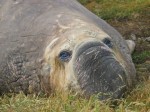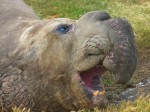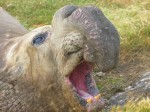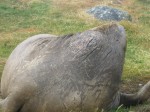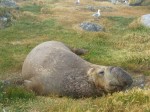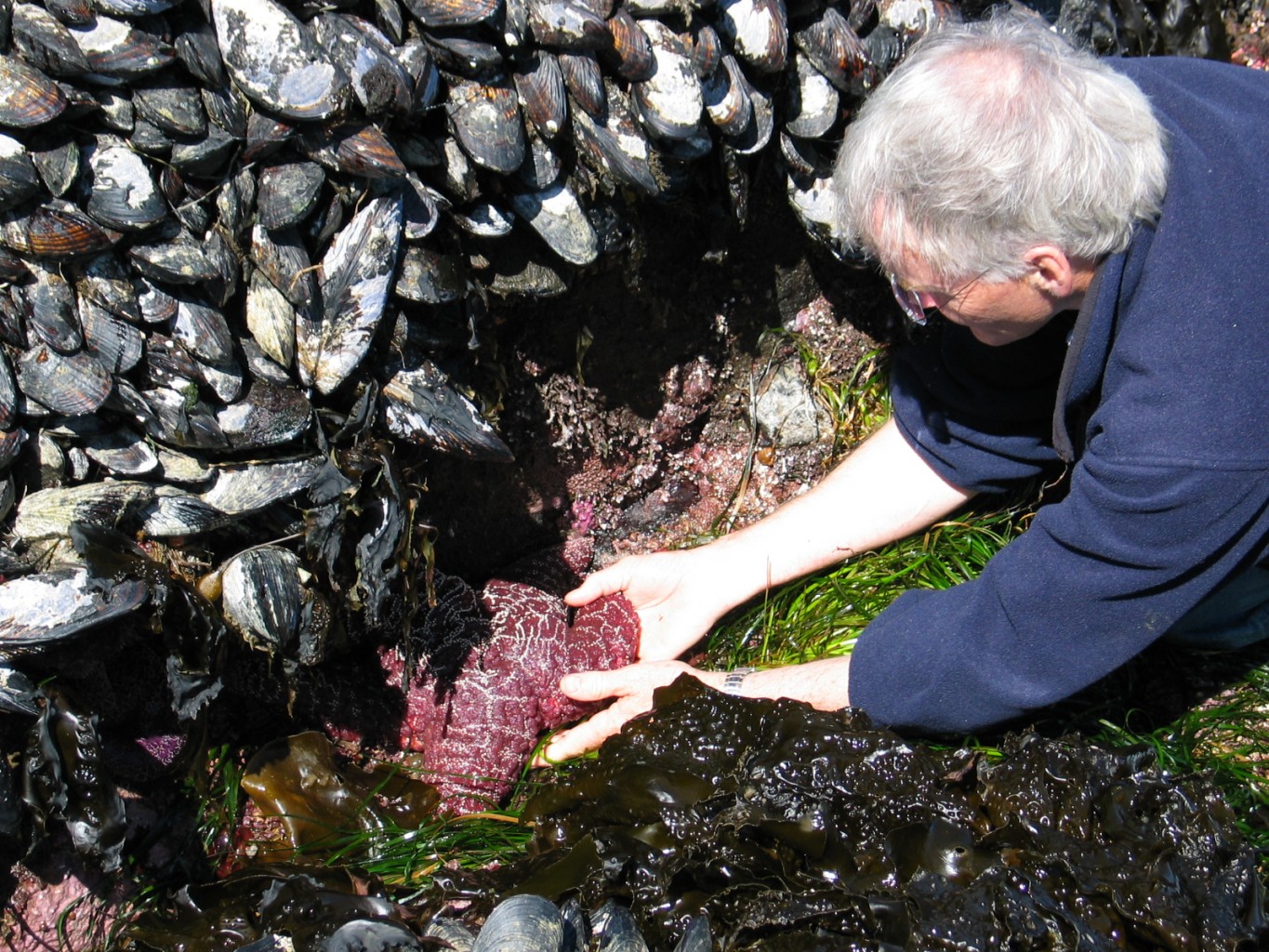SLASH : Up close and personal with an elephant seal.
We were getting so many pictures of our favourite elephant seal, “Slash” that I thought I might as well open up a page just for him. Slash has provided an excellent opportunity to study this very large marine mammal. We think these pictures by Angus Matthews in December of 2002 are the first we have of Slash at Race Rocks:
-

-
Slash on South Rocks Dec 2002
-

-

-
Photos by Angus Matthews.
-

-
Note he has not been impacted yet by the boat as the next images show.
He first sought shelter on the main Island Great Race Rocks back in January of 2003. A boater had run over this elephant seal leaving large gashes on his head and spiral-like cuts along his body. Mike Slater, our ecoguardian at the Rocks saw him hauled out at the end of the boat ramp and recorded this first video. Because of his injuries, Mike named him “Slash” During all of 2003, he spent most of his hours sleeping up on the grassed areas of Great Race Rocks. He became very used to humans and now as long as one keeps a respectable distance of at least 2 meters, and is prepared to move out of the way when he decides to change locations, he is very tolerant of people.
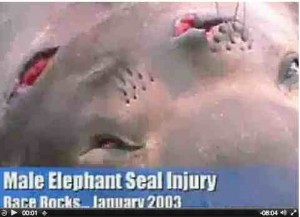 Slash receives some serious injuries when a motor boat runs over him.
Slash receives some serious injuries when a motor boat runs over him.
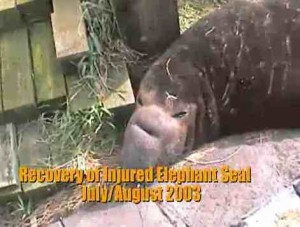
Slash
Slash recovered with scars a year and a half later .
“From a scientific point of view I know its bad form to anthropomorphize when considering animal behaviour. So perhaps just say that we are allowing this page for any and all aspects of the human experience with an elephant seal.
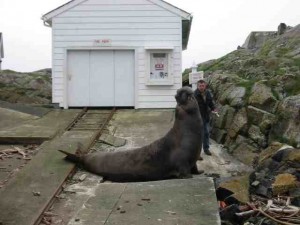 I thought about opening a new page after spending several days in July 2008 at Race Rocks relieving for Mike and Carol Slater when they were on holidays. I spent some quiet time with Slash, took video and many pictures and then when Laurie Tomin was out at Race Rocks for a few days to get caught up on some writing, her e-mail provoked me to action as it had a rather nice message: ” Garry Fletcher
I thought about opening a new page after spending several days in July 2008 at Race Rocks relieving for Mike and Carol Slater when they were on holidays. I spent some quiet time with Slash, took video and many pictures and then when Laurie Tomin was out at Race Rocks for a few days to get caught up on some writing, her e-mail provoked me to action as it had a rather nice message: ” Garry Fletcher
- “So, back to Slash. He’s my rock star here. Not a dude of action, but of mystery and suspense. Finnegan Slash (as I call him sometimes for I think there’s a refined side to him) jelly-ambled-blubbered down to his other favorite spot–just like you said. I happened to be around when he decided to move past the boat house clearly heading for the water. But then he slipped into his typical coma again, moving only his nostrils from time to time. Durn. I gave up, had some lunch, and later returned to see 2 eco-tour boats ca. 10 meters off the dock and Slash–well it seemed as though he was waiting! I sat quite close, had a chat with him–for he did not seem to mind my presence at all. He looked at me occasionally, sometimes he breathed heavily through his nostrils (was he exercising them for a swim?), yep, thats all about he did. When the boats left, he moved down a bit more…and a bit more…(lots of waiting and suspense in between starts and stops). The longest and most fascinating stretch was a blubbery inch-worm movement to the water’s edge. There he sat, half in half out of the water and splashed some water on his back with his left fin. He hung out like this for about 15 minutes. Again, I sat close to him on the dock. Always with a little scramble distance–though I can’t say I was afraid at all. Wouldn’t want to scare or annoy him though! Then Slash gently slipped into the water. He looks enormous and prehistoric when he swims–also very slowly. Sometimes stopping, clearing his nostrils, looking at me. Then he swam slowly to the other side of the dock, doing much the same until he decided to swim off.Big day. I feel very lucky to be here! L. A. Tomin
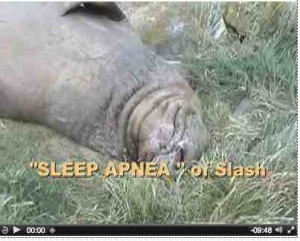 In July 2008, I took this video clip of our resident elephant seal “Slash” asleep in one of his favourite spots behind the boathouse at Race Rocks. At 8:00 am he was in a deep sleep, interrupted only by the kelp flies on his face and a few itchy spots on his body. What was remarkable was the recurring pattern of breath holding. I made this video as a study of this aspect of what appears to be intentional sleep apnea. Since the filming was un-interupted, one can time the various phases of a breathing cycle. Labels on the video point out the beginning and end of one such breath-holding cycle. I observed that he repeated a similar pattern for at least 15 minutes, as that was the length of time I was able to observe. Listen for the sounds and watch for the flaring nostrils.
In July 2008, I took this video clip of our resident elephant seal “Slash” asleep in one of his favourite spots behind the boathouse at Race Rocks. At 8:00 am he was in a deep sleep, interrupted only by the kelp flies on his face and a few itchy spots on his body. What was remarkable was the recurring pattern of breath holding. I made this video as a study of this aspect of what appears to be intentional sleep apnea. Since the filming was un-interupted, one can time the various phases of a breathing cycle. Labels on the video point out the beginning and end of one such breath-holding cycle. I observed that he repeated a similar pattern for at least 15 minutes, as that was the length of time I was able to observe. Listen for the sounds and watch for the flaring nostrils.
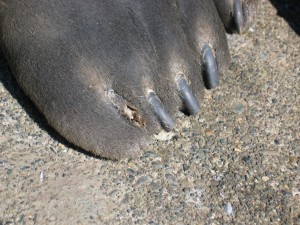
In 2006 I took a set of photos of various parts of his body. This file has a gallery of those photos :
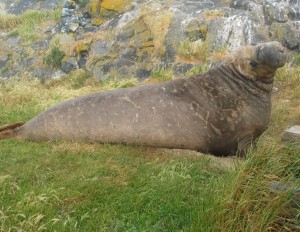
July 20, 2008
Slash was so docile, one could approach closely without disturbing him. These images are from an afternoon in July , 2008,
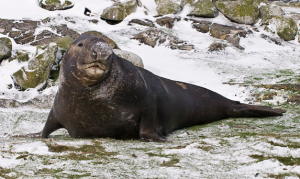
Ryan took this image and added it to his Flickr site in December 2008
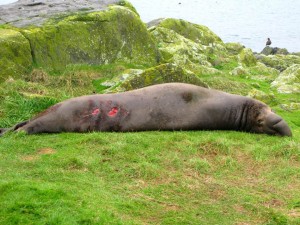
March 1, 2010: Misery after the fight with Slash Murray Sager Photo
Slash still had an important role to play however. In both the 2009 and the 2010 breeding season, he sent the younger suitor Misery off the island.
You can see more elephant seal images and videos in the Elephant Seal Taxonomy.

